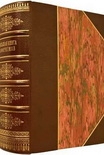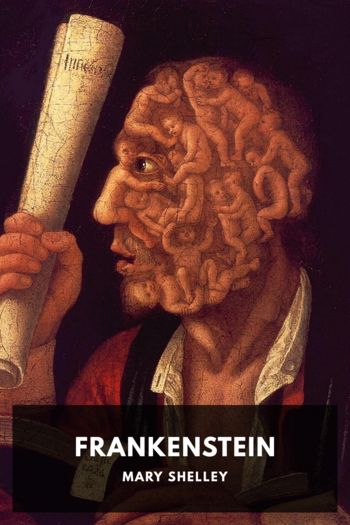Billy Wilder on Assignment, Noah Isenberg [the beginning after the end read novel .TXT] 📗

- Author: Noah Isenberg
Book online «Billy Wilder on Assignment, Noah Isenberg [the beginning after the end read novel .TXT] 📗». Author Noah Isenberg
That afternoon, with the help of my empty violin case, I was able to get a booking as a jazz violinist in Venice. When it became evident that I did not have a violin, and could not even read a single note, I truly had been helped out by a friend.
Der Querschnitt, issue 3, March 1933
* “Splendid. I am happy to be able to chat with you.”
* “Sir, you’re in luck, because today the panorama is marvelous: you’ll be able to see the whole of the Alps and the whole of the Adriatic.”
* “There is no house more worthy of consideration than this, in which Christopher Columbus spent his childhood and first youth inside his father’s walls.”
IIPortraits of Extraordinary and Ordinary People
Early on in his career as a journalist, Wilder demonstrated a remarkable talent for capturing the character of the cultural, artistic, and political figures in his midst. While still in Vienna, he wrote evocative profiles of Danish actress Asta Nielsen, whose performances on the Austrian stage and screen were among the most celebrated of the era, and of the fabulously popular Tiller Girls, the British dance troupe that showed up at Vienna’s Westbahnhof railway station in the spring of 1926. He also covered the Austrian jazz musician Toni Girardi and the momentous occasion when the American band leader Paul Whiteman graced Vienna with his presence; his profile of Whiteman, which noted the American jazzman’s famous moustache, then dove beneath it to lay bare the whole man, led to a follow-up concert review from Berlin, lavishing further attention on Whiteman’s outsize persona.
Wilder’s portraits also include two separate pieces devoted to the Prince of Wales, a figure whose impressive sartorial habits and playboy demeanor held a certain fascination for young Billie (much later, he worked a passing reference to him into the dialogue for The Front Page [1974], one of his final movies), as well as his interview with American millionaire Cornelius Vanderbilt IV. Additional profiles include an account of the visit to Berlin by French writer Claude Anet (né Jean Schopfer), whose 1920 novel Ariane, jeune fille russe would serve as the source material for a script Wilder co-wrote with I. A. L. Diamond for Love in the Afternoon (1957); a sixtieth-birthday tribute to Felix Holländer, the German writer, critic, and frequent collaborator of theater impresario Max Reinhardt; and a tribute to his former mentor Klabund (Alfred Henschke) a year after Klabund’s passing. Wilder’s early love of film, and of the characters that inhabit that world, comes across vividly in his portraits of Erich von Stroheim (“The Man We Love to Hate”) and of American actor Adolphe Menjou on tour in Berlin. Interspersed among the more famous profiles are chronicles of everyday lives, like an account of the oldest woman in Berlin, of a Swiss-born circus clown, of a B. Z. newspaper saleswoman, and of an uncommonly talented poker artist named Fritz Herrmann. Wilder’s work on the script for Menschen am Sonntag took much the same direct, candid approach in representing everyday people with all their beauty, dignity, and truth.
Asta Nielsen’s Theatrical Mission
AN INTERVIEW
The Raimund Theater is ablaze with light. The arc lamps are reflected in the wet asphalt, a long row of cars in front of the main entrance; the show must be ending soon. I have to hurry up if my plan is to succeed. I go in through the narrow stage door. The porter at the front desk is flipping through a newspaper. I try to sneak past him, but he’s already caught sight of me. “What does the gentleman wish to do? This is not an entrance for outsiders!” I introduce myself and hold out my credentials for him to inspect. We negotiate for a full quarter of an hour. Then he leads me down a dim hallway and up to a door. “So, this is Frau Nielsen’s dressing room. You have to wait. The show will be over in ten minutes.” The porter slinks back to his desk; I wait and wait.
All of a sudden it occurs to me: how about I strike up a friendship with the coat-check girl in the meantime? As long as I get inside, even seven devils won’t cast me out. I knock on the door. A booming man’s voice answers, “Enterrr!”
A man? Did the porter show me to the wrong door? I turn the knob timidly, open the door halfway; a gentleman of medium height with an intelligent face, deep-set eyes, and a part in his hair comes toward me; at one point I must have seen him somewhere. “Yes?” “Pardon me, Sir, if I’m disturbing you. The porter showed me to this door.… I’m a journalist.… And people are interested in Asta Nielsen’s path from the movies to the stage. So I wanted to do a little interview, with the artist herself …” “Is that so? Well, then, that’s fine. Perhaps you can take a seat here. My wife will be coming soon. And please allow me to introduce myself: Gregori Chmara is my name.”
Now I know where I know him from: he is the same Chmara who acted under Konstantin Stanislavski in Vienna, has been making films in Germany for several years, and just recently became Asta Nielsen’s husband. He is adept at chatting, still struggling with the language, searching for words.
“Yes, it was my idea for





Comments (0)